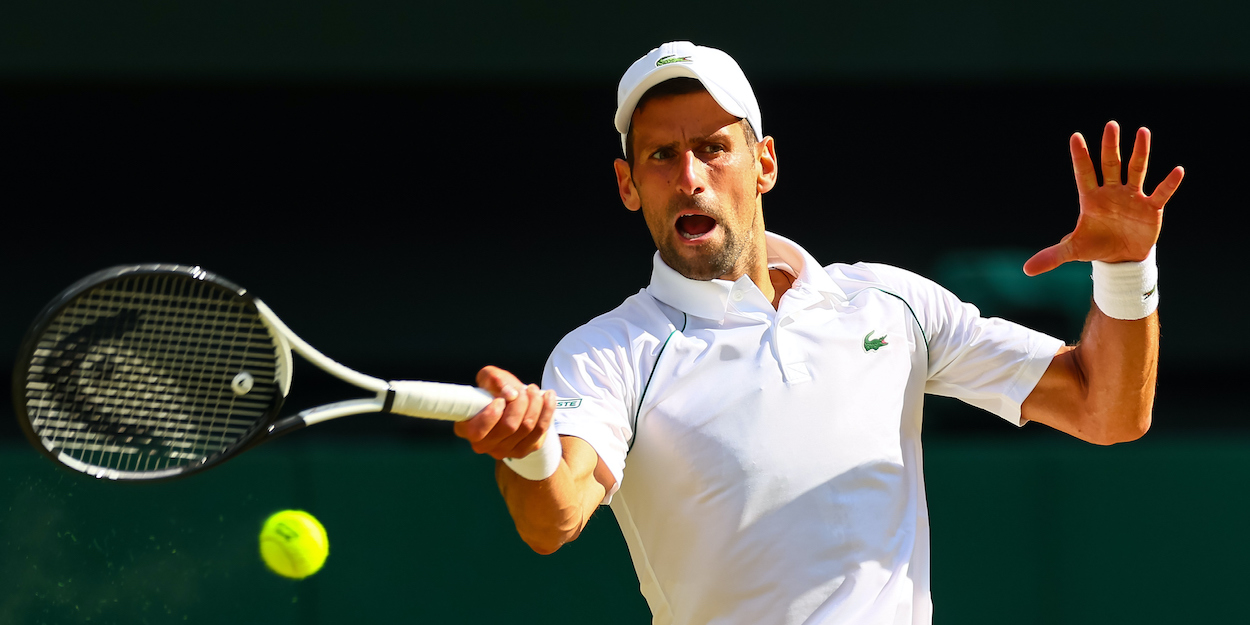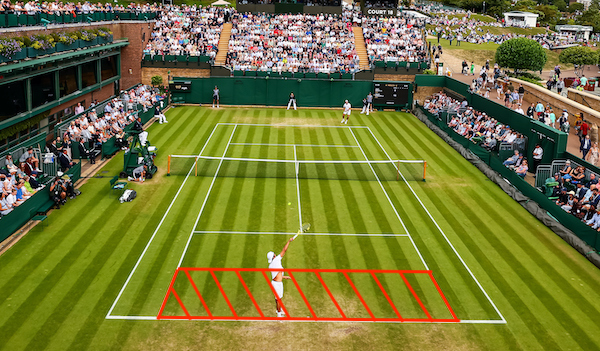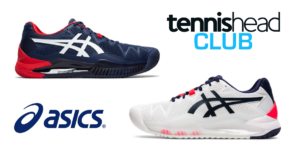
How to return first serves in tennis – “Don’t come out swinging”
Figuring out how to return serve can be frustrating and erratic as you contend with varying speeds and directions.
With the help of Craig O’Shannessy of Brain Game Tennis, we at Tennishead want to simplify the approach so you can up your defensive percentage and break more often.
How to return serve – mindset
First off, returning serve requires a different approach between first and second serve.
By its nature, the first serve will be hit harder than the second serve. As a result, you are automatically more defensive returning first serves.
Therefore, your number one priority when facing a first serve is simple: get the ball back in.
“Don’t come out swinging, don’t come out trying to hit return winners,” emphasises O’Shannessy.
“You have power coming at you, you are trying to block, you are trying to get that ball back in.
“Getting a quality first serve back in play, especially deep middle, gets you admission to the point.
“From there you can start using your primary patterns from the back of the court to swing the momentum in your favour.”
How to return serve – technique
It’s all well and good us telling you to get the ball back into the court. But how exactly should you return?
O’Shannessy explains: “Be wide with your feet, be out with your hands. Be ready to block, ready to rebound that power.
“Aim right down the middle of the court. Extract some of that power out of the serve so that you control the ball.”
O’Shannessy refers to three-time Slam champion Stan Wawrinka and the legendary Roger Federer for how they take the power out of serves with chip and slice returns.
Such returns take less timing and effort compared to those of all-time returners like Novak Djokovic and Andy Murray. In other words, the chip return is more suited to an amateur player.
Visual aids
Court diagram
You want to try to hit a first serve return deep. But what exactly does ‘deep’ mean?
With this in mind, O’Shannessy characterises a deep return as landing anywhere beyond an imaginary line between the service line and the baseline, the area highlighted in red below.

2016 US Open final
As mentioned, Wawrinka has a strong chip serve return. Meanwhile, Novak Djokovic is arguably the greatest returner of all time.
Keep in mind though, he is among the greatest players ever to pick up a racket. So, safe to say he has a head start on any and all players looking to improve their return, particularly amateurs.
Take note of how Wawrinka returns Djokovic’s serve in the 2016 US Open final. Contrast that with the heightened timing and skill required to return with the ferocity of Djokovic.
Action summary
- Have a neutralising mentality
- Try and immediately get the point back to even.
- Figure out your opponent’s favourite locations and take it away from them.
- Move around, don’t be predictable
- Get inside the server’s head and make them miss.
- Float a deep slice return back off a powerful serve
- Gives the server nothing to work with
 For free access to Craig O’Shannessy’s complete courses on ‘25 Golden Rules of Singles‘ and ‘25 Golden Rules of Doubles‘, join thousands of other keen amateur tennis players and become a member of the Tennishead Club. Once you join we’ll immediately send you ground breaking coaching advice, a welcome pack including a full ASICS head to toe outfit including shoes, plus loads more. And it costs as little as £65/$97 to join with membership benefits worth over £600/$700 per year!
For free access to Craig O’Shannessy’s complete courses on ‘25 Golden Rules of Singles‘ and ‘25 Golden Rules of Doubles‘, join thousands of other keen amateur tennis players and become a member of the Tennishead Club. Once you join we’ll immediately send you ground breaking coaching advice, a welcome pack including a full ASICS head to toe outfit including shoes, plus loads more. And it costs as little as £65/$97 to join with membership benefits worth over £600/$700 per year!
 Craig O’Shannessy is the creator of Brain Game Tennis. For 20 years he’s been involved in tennis as a coach to players like Kevin Anderson and even Dustin Brown when he famously beat Rafa Nadal at Wimbledon. More recently Craig’s been working as a match analyst at Wimbledon and for the ATP Tour. He has also used the unique insights from his match analysis software dartfish to guide players such as Novak Djokovic with analysis of opponents and performances.
Craig O’Shannessy is the creator of Brain Game Tennis. For 20 years he’s been involved in tennis as a coach to players like Kevin Anderson and even Dustin Brown when he famously beat Rafa Nadal at Wimbledon. More recently Craig’s been working as a match analyst at Wimbledon and for the ATP Tour. He has also used the unique insights from his match analysis software dartfish to guide players such as Novak Djokovic with analysis of opponents and performances.
Visit BrainGameTennis.com to read the latest and best selling course ‘Getting Tight’ where Craig teams up with Jeff Greenwald to combine their specific skill sets to help you with the universal problem all players struggle with in matches.
🎾 Free >> Join our legendary newsletter
🎾 Join >> Receive $700/£600 of tennis gear from the Tennishead CLUB
🎾 Social >> Facebook, Twitter, Instagram & YouTube
🎾 Read >> World’s best tennis magazine
🎾 Watch >> How to enjoy ATP/WTA/Slam tennis on TV
🎾 Shop >> Lowest price tennis gear from our trusted partner


